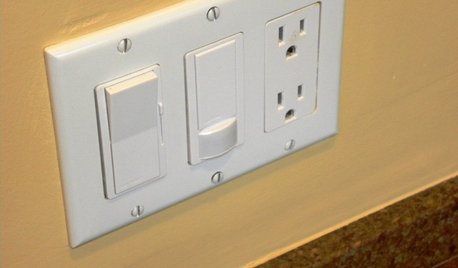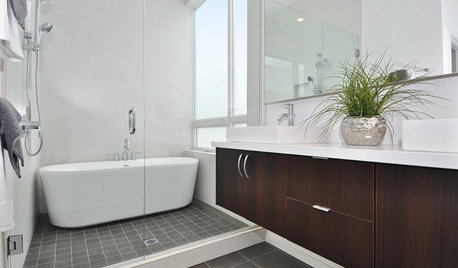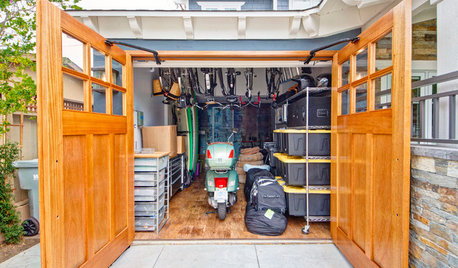Is it feasible to put a timer on ceiling light switch?
myrtle_59
10 years ago
Related Stories

LIGHTINGWhat to Know About Switching to LED Lightbulbs
If you’ve been thinking about changing over to LEDs but aren't sure how to do it and which to buy, this story is for you
Full Story
GREAT HOME PROJECTSHow to Install a Dimmer Switch
New project for a new year: Take control of your lighting to set the right mood for entertaining, dining and work
Full Story
THE HARDWORKING HOMEWhere to Put the Laundry Room
The Hardworking Home: We weigh the pros and cons of washing your clothes in the basement, kitchen, bathroom and more
Full Story
BATHROOM DESIGNWhy You Might Want to Put Your Tub in the Shower
Save space, cleanup time and maybe even a little money with a shower-bathtub combo. These examples show how to do it right
Full Story
KITCHEN DESIGNPut Your Kitchen in a Good Light With a Window Backsplash
Get a view or just more sunshine while you're prepping and cooking, with a glass backsplash front and center
Full Story
ARTNew Digital Art Frame Gets Put to the Test
Our writer sets up the EO1 at home, then invites artist friends over for a look — at images of their own work. See what they have to say
Full Story
GREAT HOME PROJECTSHow to Switch to a Tankless Water Heater
New project for a new year: Swap your conventional heater for an energy-saving model — and don’t be fooled by misinformation
Full Story
DECORATING GUIDESSwitching Up a Colonial Home to Suit a Modern Family
Floor plan labels are thrown out the window as a designer helps a family shape rooms to fit the way they live
Full Story
GARAGESHouzz Call: How Do You Put Your Garage to Work for Your Home?
Cars, storage, crafts, relaxing ... all of the above? Upload a photo of your garage and tell us how it performs as a workhorse
Full Story
HOUZZ TOURSMy Houzz: Putting the Craft in an Ohio Craftsman
DIY furnishings and creative reuse give a Columbus bungalow a thoughtful, personal look
Full StoryMore Discussions










User
User
Related Professionals
Lexington Electricians · Bowling Green General Contractors · Broadview Heights General Contractors · Flint General Contractors · Kailua Kona General Contractors · Lewisburg General Contractors · Summit General Contractors · Herriman Solar Energy Systems · Boynton Beach Home Automation & Home Media · Broomfield Home Automation & Home Media · Cutler Bay Home Automation & Home Media · Gages Lake Home Automation & Home Media · Lees Summit Home Automation & Home Media · Mount Lebanon Home Automation & Home Media · Riverside Home Automation & Home Mediamyrtle_59Original Author
User
bus_driver
Ron Natalie
Ron Natalie
bus_driver
myrtle_59Original Author